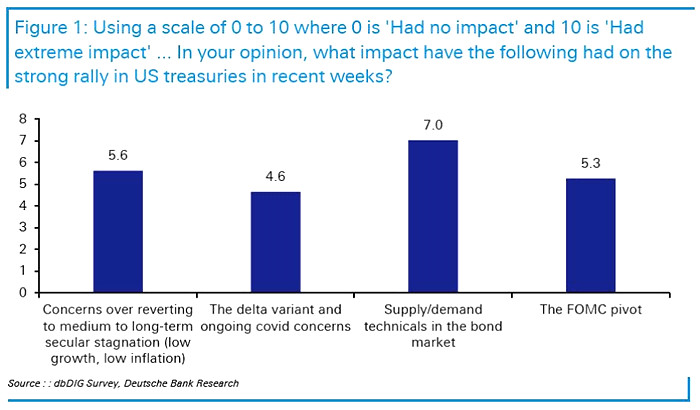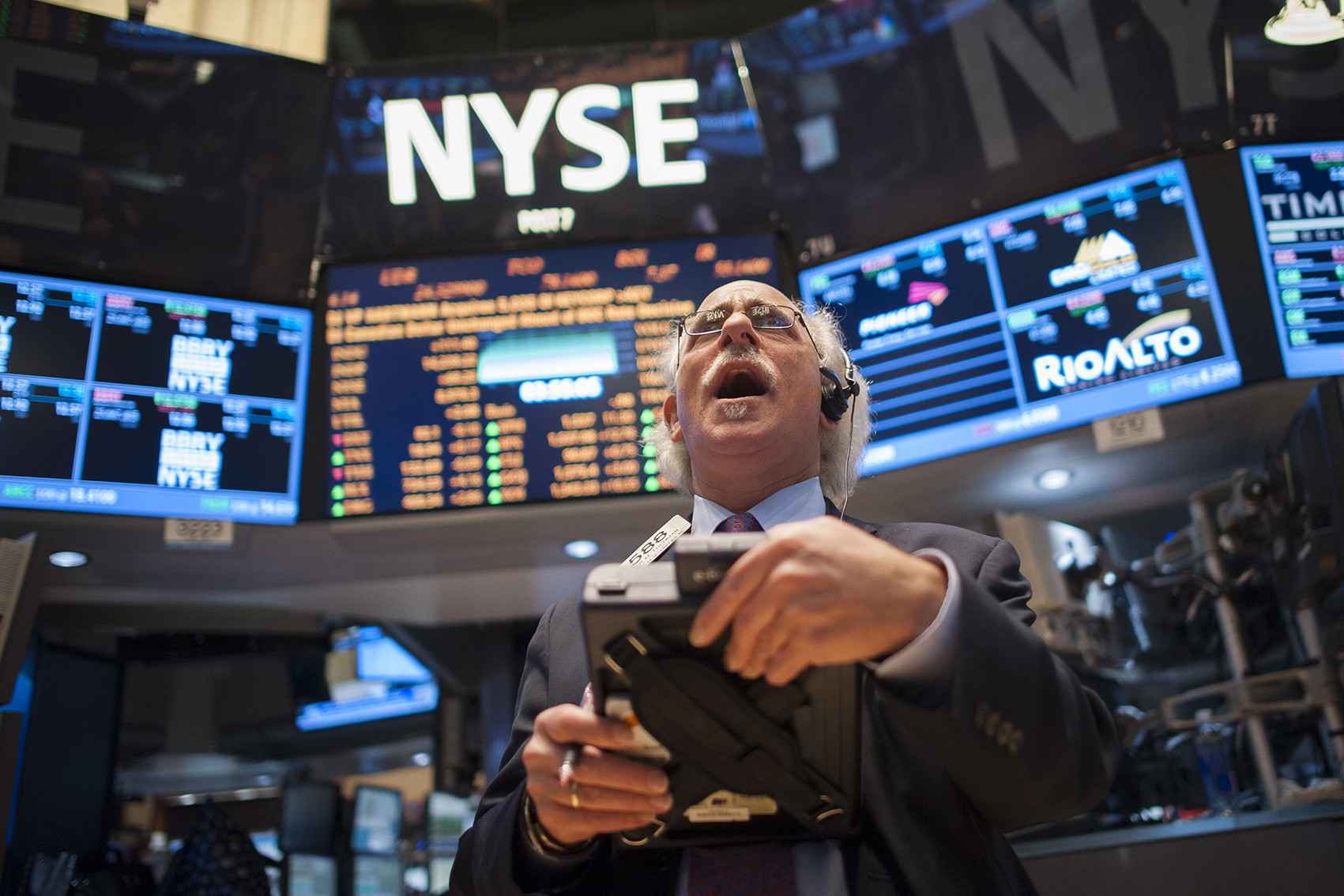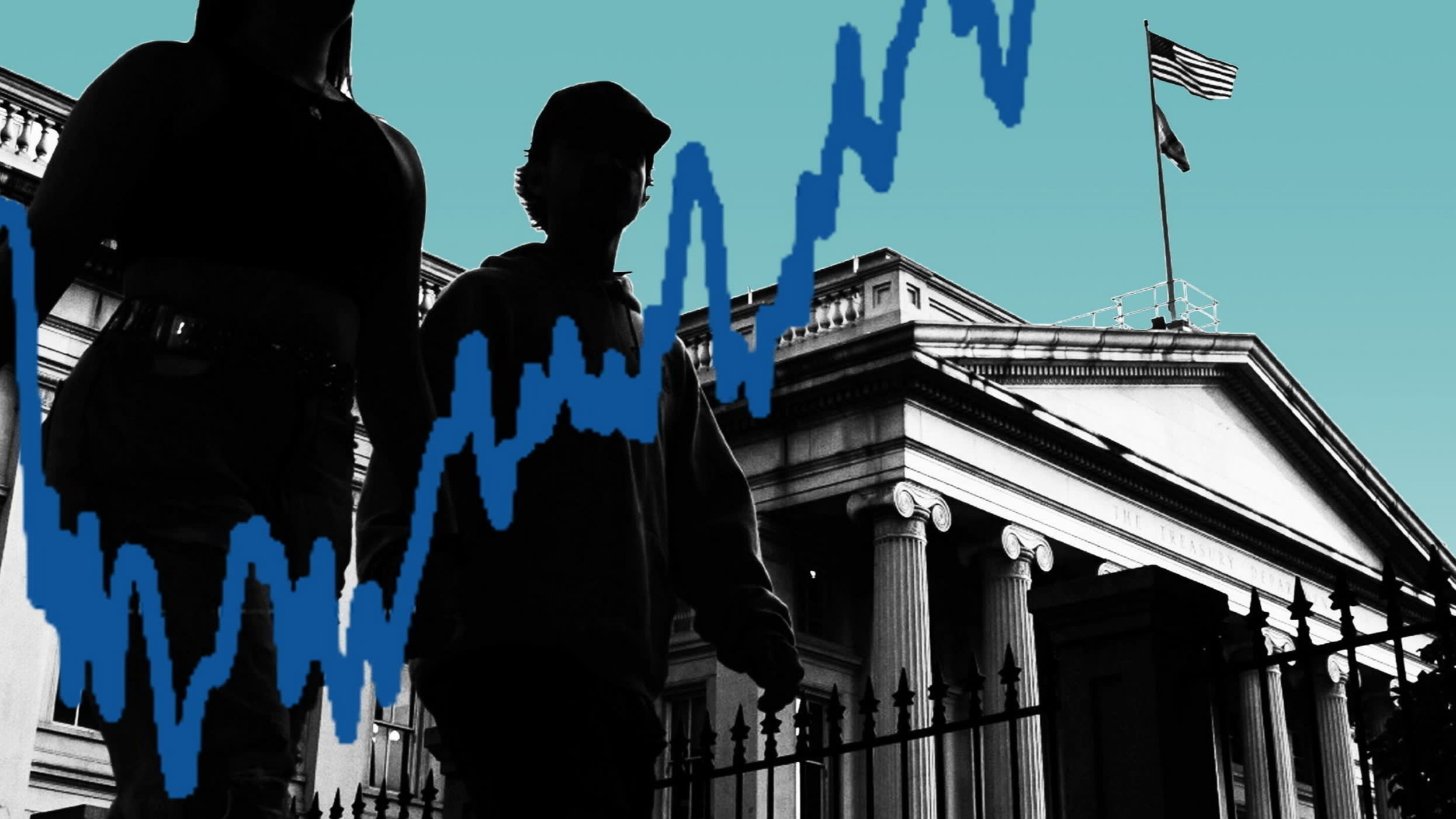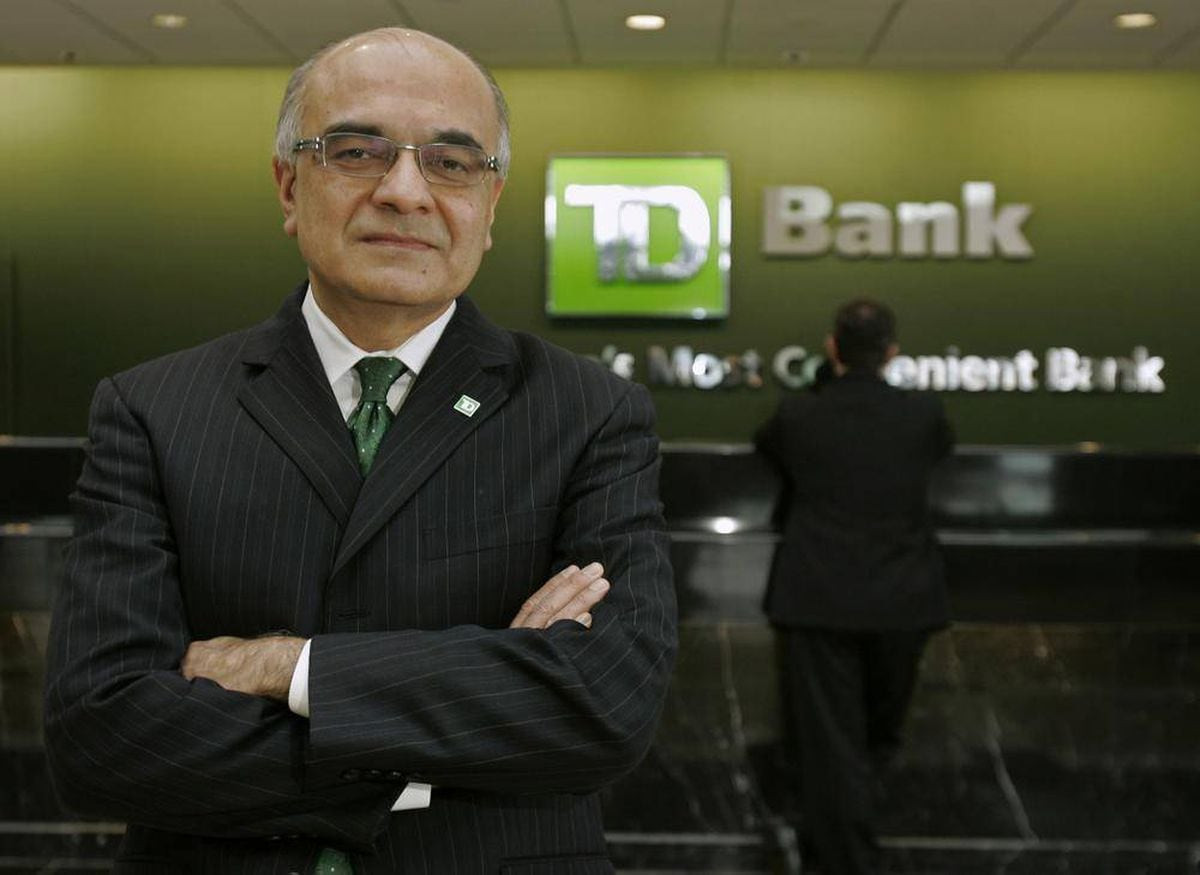A Look Back at 2019: A Precursor to Today's Bond Market Dynamics?
2019 was the last year investors saw what could be called a “normal” easing cycle driven by macroeconomic growth concerns and falling S&P 500 EPS estimates. That was the third year of President Trump’s term and obviously just before the pandemic, which wound up having an enormous influence over monetary and fiscal policy.
To give readers the backdrop, 2018 was the year when the Fed was still tightening monetary policy and trying to get the Fed funds rate off zero percent, as it remained from late 2008 through Q4, 2016. Janet Yellen started raising the fed funds rate in Q4 ’16 shortly after President Trump was elected, and then President Trump replaced Yellen with Jay Powell, but Powell continued the restrictive monetary policy as US GDP growth remained healthy and the US economy was in decent shape.
The interesting aspect of late 2018 was the correction in the S&P 500 in Q4 ’18: the last 90 days of 2018, the S&P 500 fell 13.5%, but if we end the performance calculation on Christmas Eve or December 24 ’18, when the market closed that night, the S&P 500 was down -18.90%. That was a sharp S&P 500 correction and it caught a lot of people off guard.
On December 26th, the S&P 500 opened lower again and then reversed higher to close the day +4%, and that was thought to be the moment where the equity market sniffed out Jay Powell’s sentiment turn from “higher-for-longer” to its time for a mid-cycle correction. I don’t recall whether Powell gave a speech on December 26th, or it was just the S&P 500 being the discount mechanism it is, and figuring out that the Fed was about to turn “easier”.
If you look back at the FOMC releases in 2019, Jay Powell termed the lowering of the fed funds rate as a mid-term cycle correction, and that could be what we face ahead in 2024.
Bond Market Dynamics in 2019: A Case Study
The economic backdrop was different then. Back in 2019 – 11 years after the 2008 crisis – inflation was still below 2% at 1.5%. The IMF thought there was a “global synchronized slowdown occurring” in early 2019, per the statements from that time.
Corporate America – particularly their balance sheets – were undoubtedly in great shape, thanks to zero interest rates for 8 years, and maybe that’s why US corporate bonds and in particular high-yield bonds performed so well in 2019. Frankly, you could make the same case for today. Credit spreads haven’t widened much with the recent equity market volatility, as was written about last weekend here.
Also interesting is that while the “forward 4-quarter estimate” for the S&P 500 started to roll over in Q4 ’18, it ended the quarter about where it started. Here’s a quick rundown of the history of the forward 4-quarter EPS through Q4 ’18:
By the end of June 2019, the forward 4-quarter estimate was $170.74, so it’s clear by the numbers that S&P 500 earnings growth had stalled as we moved into 2019 from 2018. What surprised me in looking back at 2019, the FOMC didn’t reduce the fed funds rate until the July ’19 meeting when it cut 25 bp’s and then it cut 25 bp’s again in September and October ’19 as well.
Echoes of 2019: A Resurgence of Interest in Bonds
“Past is prologue.” We’ve all heard that Shakespearean expression. History repeats but readers and investors want to know how it will repeat and of course we don’t know that exactly. Credit spreads and the sequential increase in the S&P 500’s “forward 4-quarter” estimate and the improvement in “rates-of-change” certainly seem to bode well for the S&P 500, but 3rd quarter results will matter.
The reversal in the S&P 500 yesterday is reminiscent and almost exactly patterned the December 26, ’18 reversal, although the SPY yesterday only finished up 1% versus the S&P 500’s return on 12/26/18 of +4%. For us fundamental investors, Oracle’s earnings report led Morningstar to conclude that “demand continues to exceed supply” in Oracle’s Cloud Infrastructure (OCI) segment, now Oracle’s largest division. It’s been remarkable how quickly Oracle (NYSE:ORCL) has gained share in the AI segment and is now considered on par with Microsoft (NASDAQ:MSFT), Amazon (NASDAQ:AMZN) and Google (NASDAQ:GOOGL).
Nvidia (NASDAQ:NVDA) and Jensen Huang’s comments yesterday also seemed to help the market rally. Hope the 2019 returns among the bond asset classes gave readers food for thought. Thanks for reading.
2024: A New Era for US Treasuries?
As global bond markets rebound, experts are highlighting the value of US Treasuries amid economic uncertainty. In an article by Wealth Professional, produced in partnership with Franklin Templeton, the global bond market has returned to a more traditional environment in the second half of 2024, with income once again driving performance in fixed income.
Jack McIntyre, portfolio manager at Brandywine Global, emphasized, “Income in fixed income is back to being a driver of performance,” pointing to the growing value of developed market bonds, particularly US Treasuries.
Financial advisors are seeing improved prospects as market dynamics shift. The US Federal Reserve is expected to begin its interest rate cutting cycle in September, following persistent inflation in the US.
Yields on 10-year US Treasuries rose from 3.8 percent in December to approximately 4.7 percent in April before returning to around 3.8 percent in August. Meanwhile, the Bank of Canada has already implemented its first round of rate cuts, causing a reduction of around 85 basis points in yields on 10-year Canadian government bonds from their peak earlier in 2024.
McIntyre believes now is the time to move out of cash and shift further along the Treasury curve. “We believe the time will be right to move out of cash and to position farther out on the Treasury curve,” McIntyre stated, with expectations that the Fed’s upcoming rate cut will redirect some of the over $6tn in money market funds toward US Treasuries.
McIntyre highlights the attractiveness of longer-dated US Treasuries due to their steady income potential and price appreciation in a rate-cut environment. He explained, “We like the return potential of longer-dated US Treasuries,” supported by the current US labour market data.
McIntyre also emphasized the importance of monitoring jobless claims, stating, “If it comes down to only one economic data point, initial/continuing jobless claims in the US would be the series that warrants watching,” reflecting the labour market's role in the Federal Reserve’s decision-making.
McIntyre likened longer maturity bonds to “a low-cost insurance policy” against economic downturns, expecting positive returns in most scenarios unless there is a significant economic rebound with inflation, which could lead the Fed to raise rates, negatively affecting bonds. Additionally, McIntyre warned of potential market volatility stemming from the upcoming US election.
He predicted that “election-related market volatility” could begin earlier than usual in 2024, and suggested that a divided government, regardless of who wins, would be the most favourable outcome for markets. This would likely prevent major new spending programs or tax cuts.
Globally, McIntyre pointed to developments in bond markets, with Japanese bonds facing uncertainty, US Treasuries poised to outperform European bonds if the US economy slows, and UK gilts showing potential to outperform core eurozone bonds in the second half of 2024.
A Rare Opportunity: Capitalizing on Higher Yields
This combination presents a rare opportunity to capitalise on higher yields and enhance total return potential as bond prices get pulled to par over their maturity terms.
THE strong interest-rate rally from 2023 paused in the first half of 2024, with yields remaining in rarified air. While some major central banks initiated rate cuts, the US Federal Reserve remains a key outlier for now by holding rates steady. Markets cheered when the Fed signalled at its latest meeting that its next move will likely be a cut.
Against this backdrop, we maintain a bullish outlook for fixed income assets and think it is a compelling entry point. Today’s elevated yields provide a favourable environment for bond investors. Structural shifts have pushed rates higher in a durable way, reflecting more normalised conditions, unlike the very compressed rate cycles seen after the global financial crisis, throughout and post-pandemic.
We think 10-year Treasury yields may hover between 3.8 and 5 per cent, with no expectations to dip down to the lower territory of recent years. This creates a favourable scenario for bond investors, with attractive starting yields that provide a stronger outlook for forward-looking returns.
Fixed income markets are also trading at significant discounts, with US investment-grade (IG) bond prices near their lowest levels in more than 40 years. Given the high correlation between starting yields and five-year forward returns, we believe this combination presents a rare opportunity to capitalise on higher yields and enhance total return potential as bond prices get pulled to par over their maturity terms.
Given that rates have fallen within six months of the Fed’s first rate cut, investors waiting for cuts to commence may miss the opportunity.
From an asset-allocation standpoint, we are in a much more balanced risk/reward regime than before. Ten-year US bond yields currently exceed equity earning yields as measured by the S&P 500, making fixed income a more favourable option from a risk-adjusted return perspective.
Historically, bonds offer attractive risk-adjusted returns following central bank pauses. For instance, following Fed pauses, IG corporates returned about 8 per cent per annum comparable to US stocks returns (about 9 per cent) on a three-year basis – but with less than half of its volatility.
Additionally, stocks and bonds tend to have low correlations when central bank policy shifts to holding or cutting patterns. Bonds have historically been good shock absorbers, delivering solidly positive returns when equities plummet. With rising geopolitical risks, potentially higher volatility strengthens the case to diversify into bonds.
Investors now have the opportunity to lock in higher starting yields that are at levels not seen in a decade. We expect bonds to offer a greater total return profile, while being able to absorb shocks from equity market corrections. Cash yields are less sustainable in a slowing economic environment, given the scope for central banks to slash rates.
The Future of the Bond Market: Navigating a Complex Landscape
Ongoing macro and geopolitical uncertainty will continue to create a deep opportunity set for adding value through issue, sector, term structure and currency positioning. US and German 10-year government bond yields are likely to remain elevated, providing the main source of returns. We are less convicted on directional views as we see two-sided risks: reflation and fiscal risks to the upside, disinflation and recession to the downside.
IG credit spreads have tightened in the US and Europe, making carry a more likely source of returns than spread compression. Spread dispersion and macro volatility will present opportunities for active managers, especially with higher all-in yields in credit.
Emerging hard-currency debt also presents opportunities as macro uncertainties, the dispersion in quality, fundamentals and valuations offer opportunities. Emerging markets local debt offers high carry and price gains potential where their central banks have room to cut.
Yields continue to moderate as markets await Fed rate cuts, giving investors a short window to extend duration now and lock in higher rates. High-yield spreads are close to fair value, but looking beneath the hood, the dispersion in this segment is the highest we have seen in a couple of decades. We think the market is underpricing global geopolitical risk and uncertainty, providing active opportunities to add risk and reward accurate credit selection.
A new regime of higher bond yields makes fixed income assets very attractive for long-term investors. With elevated bond yields, a favourable risk-reward profile compared to equities, and the potential for capital appreciation as rates decline, the current fixed income landscape presents a compelling opportunity for investors to enhance their portfolio’s total return potential.
Disclosure: None of this is a recommendation or advice, but only an opinion. Past performance is no guarantee of future results. Investing can and often does involve loss of principal even for short periods of time.



















